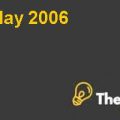
Porter Five Forces Model
The porter five forces model examines the market conditions with respect to the ease of doing business. It examines the extent to which different market forces are capable of driving demand and controlling profit terms for the companies in the market. It also determines the extent to which external forces may affect the performance of companies in the respective market.
Rivalry
- There were numerous companies competing in the household furniture industry with the various product ranges
- This huge presence of the companies result in an increase of rivalry
- In 1986 U.S furniture industry was having a size of around $13.4 billion
- The top 10 U.S firms possess a part of 22.7% in the overall share by the year 1986
- Interco was leading with the share of around 4.1%
- Mohasco at second with position 3.3% share
- Bassett at third position with 3.0% share
- Lane Co was in the fourth position with 2.3% share
- La-Z-Boy Chair was in fifth position with 2.3% share
- Armstrong World was in sixth position with 1.8% share
- Ladd Furniture was in seventh position with 1.8% share
- Drexel-heritage was in eighth position with 1.7% share
- Universal Furniture was in ninth position with 1.2% share
- Dixie Furniture was in tenth position with 1.1% share
- Imports has a minor role to play therefore the rivalry has increased
- The number of specialized furniture had seen a rapid increase
- IKEA arrival in U.S, offering discounts of around 20%-25%
- New method of selling through stores had been introduced
- Active rental program (7%)
- 64% credit selling increasing the rivalry
Suppliers
- 10 companies having a majority share can dominate the supplier
- Long leading times, creating the scheduling and inflexibility issues
- Limited backward integration in the industry
- By the year 1985 some parts were bought from suppliers abroad
- No as such issue of switching costs
- Local suppliers faced trouble because major purchasing was done from outside
- Suppliers give leverage to a few companies
- Particle board suppliers
- Fiber board suppliers
- Hardboard suppliers
- Paint, varnish and hardware suppliers
Buyers
- Baby boom generation
- Age of 35-44
- Due to Price
- Due to Quality
- Due to Finishing
- Due to Style
- Being buyers, 44% of the couple only knew the name of one furniture company
Substitutes
- There is no as such substitute to home furniture
Companies like IKEA, Interco, Mohasco need to maintain prices, quality and style to remain..................
This is just a sample partial case solution. Please place the order on the website to order your own originally done case solution.
Profiles of household furniture industry in the United States in 1986. Designed for use with Masco Corp (A) and (B). "Hide
by Michael E. Porter, Cynthia A. Montgomery, Charles W. Moorman 12 pages. Publication Date: April 27, 1989. Prod. #: 389189-PDF-ENG













